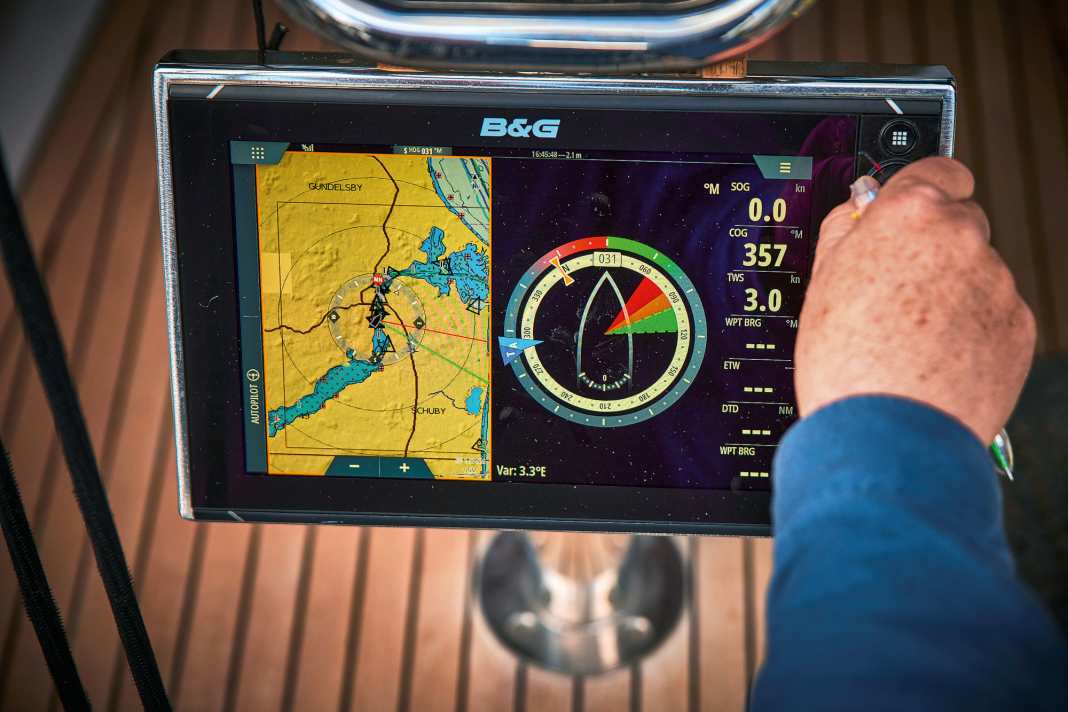Navigation: Overview of plotters - What added value do today's multifunctional displays offer?
Alexander Worms
· 06.02.2023






It all started when tablets became popular. Suddenly it was possible to navigate with comparatively inexpensive electronic nautical charts. But the tablets could do even more: book a berth in the harbour, keep in touch with the outside world or play music. The plotters fell behind. The manufacturers reacted: More and more functions were packed onto the device, and the hardware sometimes couldn't quite keep up.
If everything works, a plotter is now the interface for all information
Today, multifunction displays (MFDs) are operated with the same operating system (Android) as most tablets. A connection to the WLAN enables all kinds of functions. What was lost was a unique selling point of the plotter: it was offline. Access from outside was impossible. This ensured a high level of operational reliability. However, today's models occasionally have problems with the variety of applications. Not all devices boast particularly fast processors either. Nevertheless, if everything works, a plotter today is the interface for all information that is digitally available on board: position on the nautical chart, AIS data, radar image as an overlay on the chart, water depth, battery voltage, engine data.
The possibilities are many and varied. A larger screen helps to keep track of the flood of data. While there used to be plotters with a five-inch screen, today there is hardly anything smaller than a nine-inch screen diagonal. And that is already small. A distinction is also made today between pure touchscreen devices and those that can also be operated with buttons. While the first generations with touch operation still had problems with moisture or rain, this no longer seems to be the case today. The MFDs are therefore catching up with the tablet. What continues to speak in favour of the fixed version is the permanent power supply, the guaranteed waterproofness and the ability to really darken the displays when driving at night. Tablets often remain too bright or are barely legible in the sunshine in an open cockpit.
See and be seen
Thanks to the automatic identification system AIS, the course and speed of other ships can be displayed on the plotter. This ensures safety. Actually
Fishermen are a people apart. Time and again, they simply switch off their AIS. This is understandable, as they don't want to show their colleagues where they are travelling. However, this makes it difficult for other road users to recognise the sometimes erratic courses of the "farmers of the sea". Switching off the class A AIS is prohibited for commercial vessels anyway.
Recreational yachts can use an AIS. They then belong to class B. Yachts can also use a device that only receives and does not actively transmit. Class B signals from yachts that are also transmitting can be filtered out on Class A devices, unless they are subject to the newer SODTMA standard. The AIS obtains its position, course and speed from its own GPS antenna, not from the navigation network. Some devices also transmit their information on board via WLAN. This means that the AIS data can also be displayed in sat nav apps on a tablet or smartphone. Depending on the traffic density, an AIS alarm can be activated if the CPA, the point of closest approach, falls below a certain value.
